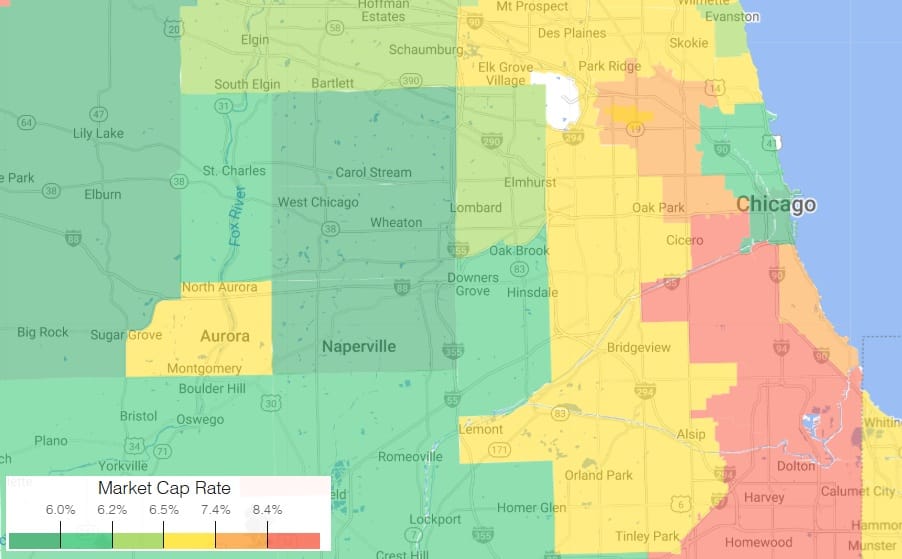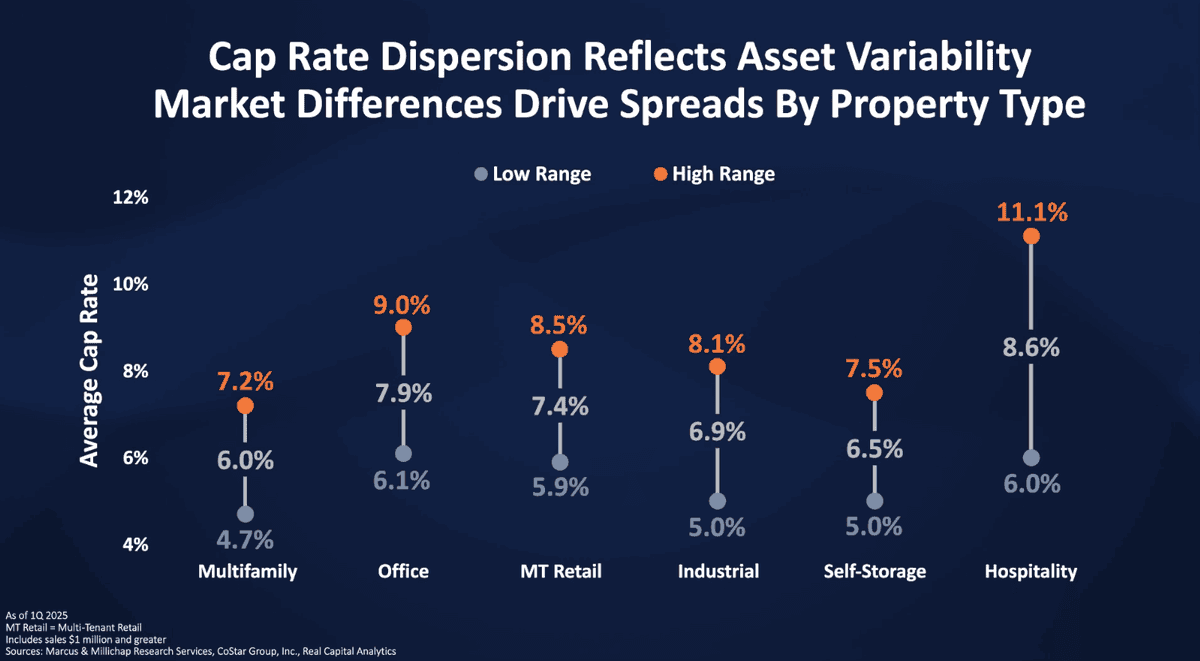When I first entered the multifamily real estate sector, I quickly realized that success hinged on more than just finding properties to manage. It was about enhancing operations at every level. For instance, I recall one property where simple digital tools transformed communication with tenants, resulting in higher satisfaction and lower vacancy rates. This experience opened my eyes to the myriad operational enhancements available today that can significantly boost net operating income (NOI).
Revolutionizing Tenant Engagement
In the world of property management, tenant engagement is key. It’s not just about filling vacancies; it’s about creating a community where tenants feel valued and heard. Let’s explore some innovative strategies to enhance tenant engagement.
1. Implementing Tenant Portals for Seamless Communication
Imagine a world where tenants can easily communicate their needs and concerns. That’s where tenant portals come in. These online platforms allow tenants to submit maintenance requests, pay rent, and access important documents all in one place. It streamlines communication and makes life easier for everyone involved.
But why is this important? Clear communication helps build trust. When tenants feel they can easily reach out, they are more likely to stay. This leads to longer leases and reduced turnover.
2. Regular Feedback Loops to Gather Tenant Input
How often do we ask our tenants for feedback? Regular feedback loops are essential. They provide insights into tenant satisfaction and areas for improvement. Surveys, suggestion boxes, or even casual check-ins can work wonders.
- Surveys can be sent out quarterly to assess tenant satisfaction.
- Suggestion boxes can be placed in common areas for anonymous feedback.
- Casual check-ins during community events can foster open dialogue.
When tenants see that their feedback leads to changes, they feel valued. This not only boosts their satisfaction but also enhances overall property management operations. It’s a win-win!
3. Community-Building Initiatives to Improve Tenant Relationships
We all crave a sense of belonging. Community-building initiatives can foster strong relationships among tenants. Organizing events like potlucks, movie nights, or fitness classes can bring people together. These gatherings create a friendly atmosphere and encourage interaction.
Moreover, community events can be an effective strategy for reducing turnover. When tenants form friendships, they are less likely to leave. They see their home as more than just a place to live; it becomes a community.
4. Utilizing Social Media for Engagement and Updates
In today’s digital age, social media is a powerful tool. It allows property managers to engage with tenants in real-time. Sharing updates, events, and even maintenance tips can keep tenants informed and engaged.
Consider creating a private Facebook group or Instagram account for your property. This space can be used for announcements, sharing photos from community events, or simply connecting with tenants. It’s a great way to foster a sense of community and keep everyone in the loop.
Conclusion
Investing in tenant engagement strategies can lead to improved satisfaction and lowered turnover rates, essential for maximizing NOI. By implementing these initiatives, we can create a thriving community where tenants feel at home.
Remember, a little effort goes a long way. Let’s revolutionize tenant engagement together!
Leveraging Technology for Operational Efficiency
In today’s fast-paced world, technology is no longer just a luxury; it’s a necessity. As property managers, we face numerous challenges daily. From tenant communication to maintenance requests, the workload can be overwhelming. But what if I told you that adopting technology could streamline our operations? It’s true! Let’s explore how we can leverage technology for operational efficiency.
1. Adopting Property Management Software for Automation
First and foremost, adopting property management software is a game changer. Imagine having a tool that automates routine tasks. Tasks like rent collection, lease management, and tenant screening can be handled with just a few clicks. No more stacks of paperwork or hours spent on data entry!
- Efficiency: Automation reduces human error and saves time.
- Accessibility: Many software solutions offer cloud-based access, allowing us to manage properties from anywhere.
- Cost-effective: While there’s an initial investment, the long-term savings in labor and resources are significant.
Think about it: how much time could we save? Wouldn’t that time be better spent on building relationships with our tenants?
2. Using Data Analytics for Informed Decision-Making
Next up is data analytics. This isn’t just a buzzword; it’s a powerful tool that can transform our decision-making process. By analyzing data, we can identify trends and make informed choices.
- Market Analysis: Understanding market trends helps in setting competitive rental prices.
- Tenant Insights: Knowing tenant preferences can improve satisfaction and retention.
- Operational Improvements: Data can highlight areas needing improvement, whether it’s maintenance response times or service quality.
Have you ever wondered why certain properties perform better than others? The answer often lies in the data. By harnessing it, we can boost our operational efficiency.
3. Innovating Maintenance Requests Through Digital Platforms
Gone are the days of tenants calling in maintenance requests. Now, we can innovate this process through digital platforms. A simple mobile app allows tenants to submit requests with photos and descriptions.
- Speed: Requests can be addressed faster, leading to happier tenants.
- Tracking: Both tenants and managers can track the status of requests in real-time.
- Documentation: All requests are logged, providing a clear history for future reference.
Isn’t it amazing how technology can enhance communication? It fosters a sense of transparency and trust between us and our tenants.
4. Integrating Smart Home Technology to Enhance Living Experiences
Lastly, let’s talk about smart home technology. This trend is gaining momentum, and for good reason. Integrating smart devices can significantly enhance the living experience for tenants.
- Convenience: Features like smart thermostats and keyless entry systems provide comfort and ease of use.
- Energy Efficiency: Smart devices can help reduce energy consumption, leading to lower utility bills.
- Attractiveness: Properties with smart technology are often more appealing to tech-savvy tenants.
Imagine offering a property where tenants can control their environment from their smartphones. It’s not just a trend; it’s the future of living.
In conclusion, the strategic implementation of technology can dramatically streamline operations. By adopting these tools, we can not only enhance efficiency but also improve tenant satisfaction. The journey toward a more efficient property management process begins with us embracing these technological advancements.
Cost Management: Exploring Sustainable Practices
Managing costs is crucial for any property owner. But what if I told you that adopting sustainable practices can not only save money but also make your properties more appealing? Let’s dive into how we can achieve this.
1. Implementing Energy-Efficient Systems
First up, energy-efficient systems. These are not just buzzwords; they are practical solutions. By investing in energy-efficient appliances and systems, we can drastically reduce operating costs. Think about it: less energy consumption means lower utility bills. Isn’t that a win-win?
Consider the following:
- LED lighting instead of traditional bulbs.
- Smart thermostats that adjust heating and cooling automatically.
- Energy-efficient windows that keep the temperature stable.
These upgrades may require an initial investment, but the long-term savings can be significant. Plus, we are contributing to a healthier planet. Who wouldn’t want that?
2. Embracing Green Initiatives
Next, let’s talk about green initiatives. Today’s tenants are more eco-conscious than ever. They want to live in spaces that reflect their values. By embracing green practices, we can attract these tenants.
What does this look like?
- Recycling programs within the property.
- Community gardens that promote local produce.
- Solar panels to harness renewable energy.
As Emily Johnson, a Green Real Estate Advocate, said,
“Eco-friendly practices are not just good for the planet; they enhance your property’s appeal.”
This is not just a trend; it’s a shift in how people view their living spaces.
3. Conducting Regular Financial Audits
Now, let’s discuss the importance of regular financial audits. It might sound boring, but it’s essential for identifying waste. How often do we overlook small expenses that add up? Regular audits can shine a light on these hidden costs.
Here’s what we can do:
- Review utility bills for discrepancies.
- Analyze maintenance costs to find inefficiencies.
- Evaluate vendor contracts for better deals.
We can ensure efficient use of every dollar by closely monitoring our finances. This not only boosts our bottom line but also supports sustainable practices.
4. Upgrading Infrastructure
Finally, upgrading infrastructure is key to minimizing long-term expenses. Old systems can be a drain on resources. Investing in new infrastructure might seem daunting, but it pays off over time.
Consider these upgrades:
- Replacing outdated plumbing to prevent leaks.
- Installing high-efficiency HVAC systems.
- Improving insulation to reduce heating and cooling costs.
These improvements will not only lower operational costs but also enhance the overall tenant experience. Who doesn’t want a comfortable home?
Long-Term Savings and Trends
As we explore these sustainable practices, it’s important to remember the long-term savings from initial investments. While the upfront costs may seem high, the return on investment can be substantial. We’re not just saving money; we’re also contributing to a sustainable future.
Moreover, trends show that tenant demand for green living is on the rise. More people are looking for eco-friendly options. Adopting these practices allows us to stay ahead of the trends.
In conclusion, sustainable practices not only contribute to the environment but also positively impact NOI by decreasing operational costs. It’s a smart move for any property owner looking to thrive in today’s market.
Enhancing Operational Procedures: Streamlining Processes
In the fast-paced world of property management, enhancing operational procedures is not just a luxury—it’s a necessity. Streamlining processes can significantly impact our bottom line. It’s about efficiency, effectiveness, and, ultimately, revenue. But how do we achieve that?
1. Conducting a Thorough Review of Existing Operational Procedures
First and foremost, we need to take a hard look at what we’re currently doing. This means conducting a thorough review of existing operational procedures. What’s working? What isn’t? Are there steps that are redundant or outdated? By identifying these areas, we can make informed decisions about where to focus our efforts.
Think of it like spring cleaning for your business. You wouldn’t keep items around that no longer serve a purpose, right? The same goes for our operational procedures. A fresh start can spark innovative concepts and enhancements.
2. Implementing Standardized Processes for Maintenance and Leasing
Next, we should implement standardized processes for maintenance and leasing. Consistency is key. When everyone follows the same procedures, it reduces confusion and errors. This is particularly crucial in maintenance, as prompt responses can significantly impact tenant satisfaction.
- Standardized maintenance requests can streamline communication.
- Leasing processes should be clear and uniform to avoid discrepancies.
By having a clear framework, we can ensure that our operations run smoothly and efficiently.
3. Training Staff on Best Management Practices
We can have the best procedures in place, but they’re only as good as the people executing them. That’s why training staff on best management practices is crucial. Regular training sessions can assist in keeping everyone aligned and updated with the latest industry standards.
Imagine a sports team without practice. They’d struggle to perform during the game. The same applies here. Regular training transforms our team into a well-oiled machine, ready to tackle any challenges that come our way.
4. Seeking Feedback from Team Members on Process Improvements
Lastly, we should actively seek feedback from team members on process improvements. After all, who better to provide insight than those who are on the front lines? Encouraging open communication can lead to innovative ideas and solutions.
Consider this: If we’re not listening to our team, we might miss out on valuable perspectives. A suggestion from a maintenance worker could lead to a game-changing process improvement.
The Role of Operational Efficiency in Maximizing Revenue
All these steps contribute to one overarching goal: maximizing revenue. Operational efficiency plays a pivotal role here. When we minimize costs and increase efficiency, we directly impact our Net Operating Income (NOI). Both parties benefit from this situation.
Examples of Successful Operational Revamps in Real Estate
Real estate is filled with examples of successful operational revamps. Companies that have adopted these principles often see significant improvements in their performance. Whether it’s through technology integration or revamped training programs, the results are undeniable.
So, let’s commit to enhancing our operational procedures. Together, we can create a more efficient, effective, and profitable property management operation.
The Impact of Market Trends: Staying Ahead of the Curve
In the fast-paced world of real estate, especially in the multifamily sector, understanding market trends is not just beneficial; it’s essential. As property managers and owners, we must continuously analyze local market data. This allows us to adjust our strategies effectively. But why is this so important? Because the market is always changing. If we don’t adapt, we risk losing our competitive edge.
Analyzing Local Market Data
First and foremost, let’s talk about the importance of analyzing local market data. This data can tell us a lot about our potential tenants. It reveals trends in rental prices, vacancy rates, and even the types of amenities that are in demand. By monitoring this information, we can adapt our strategies accordingly.
For instance, if we notice that vacancy rates are increasing in our area, we might consider lowering our prices or offering incentives. On the other hand, if demand is high, it might be time to raise rents slightly. The key is to stay informed and be ready to act.
Identifying Emerging Demographic Trends
Next, we must focus on identifying emerging demographic trends among tenants. Who are our current tenants? Are they young professionals, families, or retirees? Understanding the demographics can help us tailor our marketing efforts and property features to meet their specific needs.
For example, if we see an influx of young professionals in the area, we might want to invest in co-working spaces or modern amenities that appeal to them. This not only attracts more tenants but also increases tenant satisfaction and retention.
Utilizing Competitive Analysis
Another crucial aspect is utilizing competitive analysis to inform unit pricing. We need to know what other properties in our area are charging. This helps us position our units competitively. If our prices are too high, we risk vacancies. If our prices are too low, we could be losing out on potential revenue.
By comparing our offerings with those of our competitors, we can ensure that we are providing value while also maximizing our revenue. In this way, we can adapt our pricing strategies based on market conditions.
Adapting to Economic Shifts
Finally, we must be prepared to adapt to economic shifts to maintain occupancy rates. Economic conditions can change rapidly. A downturn can lead to increased vacancies, while a booming economy might drive demand up. By staying alert to these shifts, we can make proactive decisions that help us maintain healthy occupancy rates.
For example, during an economic downturn, it may be wise to offer flexible lease terms or temporary rent reductions. This can help attract tenants who are more cautious about their spending. Conversely, in a strong economy, we might focus on enhancing our amenities to attract higher-paying tenants.
Conclusion
In conclusion, adapting to market trends is not just a strategy; it’s a necessity for success in the multifamily sector. By continuously analyzing local market data, identifying emerging demographic trends, utilizing competitive analysis, and adapting to economic shifts, we can ensure our properties remain appealing and competitive.
By taking these proactive measures, we not only mitigate the risks of vacancies but also maximize occupancy and net operating income (NOI). Maintaining a competitive edge is crucial for long-term success in this constantly changing market.
Receive Market Insights
Periodic analysis on rents, pricing, cap rates, and transaction activity across Chicago and key suburban markets.



